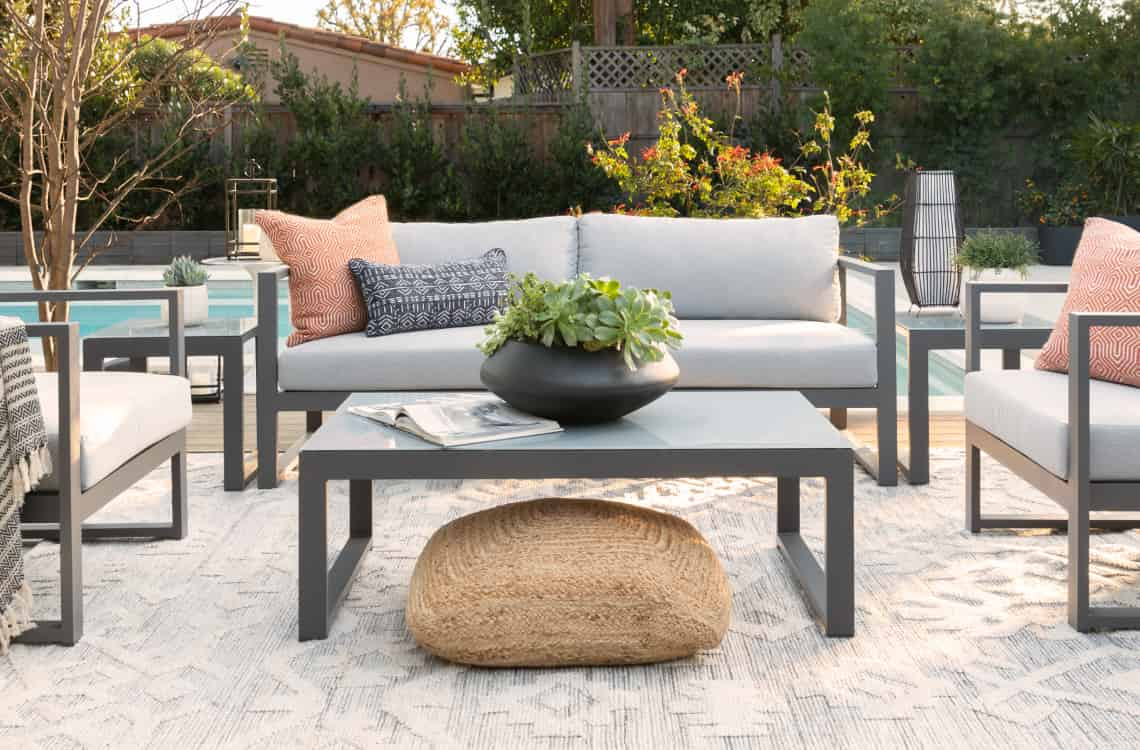
Patio Furniture Placement: A Comprehensive Guide
Introduction
Creating a comfortable and inviting outdoor living space requires careful consideration of patio furniture placement. The arrangement of your furniture can significantly impact the functionality, aesthetics, and overall ambiance of your patio. This comprehensive guide will provide you with the essential principles and practical tips to optimize your patio furniture placement, ensuring a stylish and enjoyable outdoor experience.
Section 1: Planning Your Patio Layout
1. Determine the Purpose of Your Patio
Before placing your furniture, define the primary purpose of your patio. Will it be used for dining, entertaining, relaxation, or a combination of activities? This will influence the size, shape, and arrangement of your furniture.
2. Consider the Size and Shape of Your Patio
Measure the dimensions of your patio to determine the available space for furniture. Consider the shape of the patio, as it may influence the best arrangement for your furniture.
3. Plan for Traffic Flow
Ensure that your furniture placement allows for easy movement around the patio. Avoid blocking pathways or creating obstacles that could hinder access to different areas.
4. Establish Focal Points
Identify focal points on your patio, such as a fireplace, water feature, or stunning view. Arrange your furniture to draw attention to these features and create a sense of visual interest.
Section 2: Choosing the Right Furniture
1. Select Furniture Proportional to the Patio
Choose furniture that is appropriately sized for the dimensions of your patio. Oversized furniture can make a small patio feel cramped, while undersized furniture may appear lost in a large space.
2. Consider the Style and Materials
Choose furniture that complements the architectural style of your home and the overall aesthetic you want to create. Consider the durability and weather resistance of the materials, especially if your patio is exposed to the elements.
3. Mix and Match Different Pieces
Don’t be afraid to mix and match different pieces of furniture to create a unique and eclectic look. Combine chairs, sofas, and tables from various styles and materials to add visual interest and personality.
Section 3: Arranging Your Furniture
1. Create Conversation Areas
Arrange your furniture to create intimate conversation areas where guests can easily interact. Place chairs and sofas facing each other, ensuring that they are within comfortable speaking distance.
2. Define Dining Zones
If you plan to use your patio for dining, create a designated dining area. Place a table and chairs in a central location, allowing ample space for guests to move around.
3. Incorporate Relaxation Zones
Create cozy relaxation zones with comfortable chairs, ottomans, and loungers. Place these areas in quieter corners of the patio or near a soothing water feature to promote relaxation and tranquility.
4. Utilize Vertical Space
Maximize the use of vertical space by incorporating hanging planters, wall-mounted shelves, or trellises. This can add visual interest and create a more intimate atmosphere.
5. Add Outdoor Lighting
Enhance the ambiance of your patio with outdoor lighting. Place lanterns, string lights, or wall sconces to illuminate the space and create a warm and inviting atmosphere.
Section 4: Finishing Touches
1. Add Cushions and Pillows
Add cushions and pillows to your furniture for comfort and style. Choose fabrics and patterns that complement the overall aesthetic of your patio.
2. Incorporate Plants
Bring life to your patio with plants. Place potted plants around the furniture or create a vertical garden to add greenery and freshness.
3. Accessorize with Outdoor Rugs
Define the different areas of your patio and add a touch of style with outdoor rugs. Choose rugs that are weather-resistant and complement the colors and textures of your furniture.
4. Create Privacy Screens
If your patio lacks privacy, consider adding screens or curtains to create a more intimate and secluded space. Choose materials that are weather-resistant and blend well with the surroundings.
Conclusion
Patio furniture placement is an art that requires careful planning and attention to detail. By following the principles and tips outlined in this guide, you can create a stylish and functional outdoor living space that enhances your home and provides a relaxing and enjoyable retreat for you and your guests. Remember to experiment with different arrangements until you find the perfect layout that suits your needs and preferences.